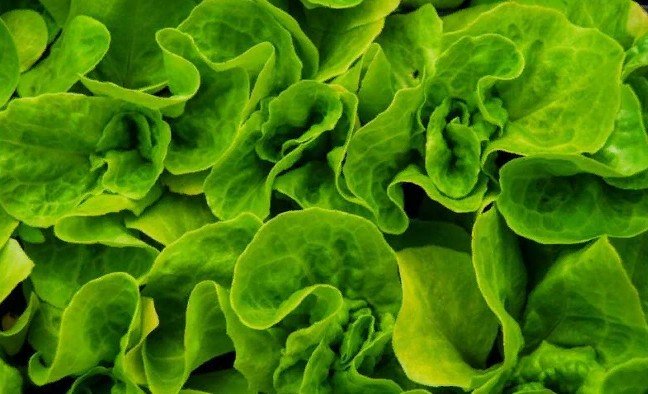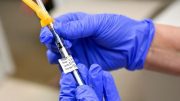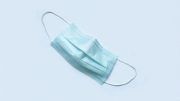COVID-19 and common cold viruses have been proven to be slowed by a chemical contained in leafy greens.
A drug developed from a component abundantly present in broccoli and other cruciferous plants may offer a potentially new and strong weapon against the viruses that cause COVID-19 and the common cold, according to researchers at Johns Hopkins Children’s Center.
COVID-19 has already claimed the lives of almost 6 million people around the world, and studies reveal that common colds cost the US economy $25 billion each year.
In a study published March 18 in the journal Communications Biology, the researchers found that sulforaphane, a plant-derived chemical known as a phytochemical that has already been found to have anti-cancer effects, can inhibit the replication of SARS-CoV-2, the coronavirus that causes COVID-19, and another human coronavirus in cells and mice.
People should not rush to buy sulforaphane supplements that can be bought online or in stores, the researchers say. They say more human studies are needed before the chemical can be proven to be effective, and there isn’t much regulation on supplements like this.
Broccoli, cabbage, kale, and Brussels sprouts are high in sulforaphane, its natural precursor. Natural sulforaphane is derived from ordinary food sources such as broccoli seeds, sprouts, and mature plants, as well as infusions of sprouts or seeds for drinking, and was first recognized as a “chemopreventive” ingredient by a team of Johns Hopkins scientists decades ago.
Sulforaphane has been demonstrated in previous research, particularly at Johns Hopkins Medicine, to have anti-cancer and anti-infection capabilities by interfering with key cellular processes.
When the COVID-19 pandemic began, our multidisciplinary research teams shifted their investigations of other viruses and bacteria to focus on a potential treatment for what was then a difficult new virus for us, says Lori Jones-Brando, Ph.D., a microbiologist at the Children’s Center and senior author of the paper.
“I was testing a number of chemicals for anti-coronavirus action when I came across sulforaphane, which has demonstrated some activity against other microbial agents that we research.” In their experiments, the researchers used purified, synthetic sulforaphane obtained from commercial chemical suppliers.
In one experiment, scientists treated cells with sulforaphane for one to two hours before infecting them with SARS-CoV-2 and HCoV-OC43, a common cold coronavirus. Low micromolar (M) concentrations of sulforaphane (2.4–31 M) were observed to suppress the reproduction of six SARS-CoV-2 strains, including the delta and omicron forms, as well as the HCoV-OC43 coronavirus, by 50%.
The researchers saw the same thing when they looked at cells that had already been infected with the viruses. Sulforaphane’s protective effects were still visible even when the virus had already spread.
The researchers also looked at the effects of sulforaphane in combination with remdesivir, an antiviral medicine used to speed up the recovery of COVID-19 infections in hospitalized adults. According to their findings, at 22 M and 4 M, respectively, remdesivir inhibited 50% of the replication of HCoV-OC43 and SARS-CoV-2.
Furthermore, the researchers found that sulforaphane and remdesivir interacted synergistically in cells infected with HCoV-OC43 or SARS-CoV-2 to reduce viral burden by 50% in different combination ratios. Synergism refers to the fact that lower dosages of both sulforaphane (for example, 1.6–3.2 M) and remdesivir (for example, 0.5–3.2 M) are more effective against the viruses when used together than when used separately.
In the past, we’ve learned that combining numerous medicines in a therapy regimen is an excellent method for treating viral infections, says Alvaro Ordonez, M.D., the paper’s first author and an assistant professor of pediatrics at Johns Hopkins University School of Medicine. “It’s really encouraging that sulforaphane and remdesivir function better together than they do separately.”
The researchers then used a mouse model of SARS-CoV-2 infection to perform their investigation. They discovered that giving mice 30 milligrams of sulforaphane per kilogram of body weight before infecting them with the virus reduced the body weight loss that is commonly linked with virus infection (a 7.5 percent decrease).
Furthermore, when compared to infected mice who were not given sulforaphane, the pretreatment resulted in a statistically significant decrease in both the viral load, or amount of virus, in the lungs (17 percent decrease) and upper respiratory tract (9 percent decrease), as well as the amount of lung injury (29 percent decrease).
There was also less inflammation in the lungs, protecting cells from an overactive immune response that may be one of the main causes of COVID-19-caused deaths.
Ordonez explains. “We discovered that sulforaphane is antiviral against the coronaviruses HCoV-OC43 and SARS-CoV-2, as well as aiding in modulating the immune response.” “It’s a good idea to use this molecule to fight these viral infections, as well as those caused by other human coronaviruses, because it can fight both.”
The researchers want to do tests on people to see if sulforaphane can help prevent or treat these infections.
Effective antiviral treatments are still required to prevent and treat COVID-19, particularly given the potential consequences of new coronavirus variants appearing in the population, Jones-Brando says, despite the introduction of vaccinations and other medications that potentially have adverse effects.
“Sulforaphane has the potential to be a good treatment that is less expensive, safe, and available in stores.”





